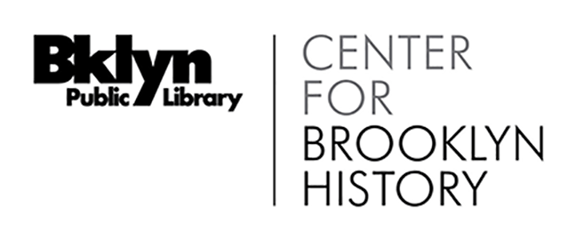Brooklyn charitable organizations for children collection
Call Number
Date
Creator
Extent
Language of Materials
Abstract
Publications from various childrens' organizations, adoption agencies, training schools, and clubs for adolescents. Materials in the collection include annual reports, promotional booklets, newsletters, event programs, and brochures.
Historical note
The age of social reform and an immigration boom in the mid 19th century brought the plight of ill, impoverished, and disadvantaged citizens to the forefront of concerns in urban cities. New York City was a national leader in addressing the needs of neglected, orphaned, and deliquent children. The earliest charity organizations for children were established during this period; in Brooklyn, they were the Orphan Asylum Society of the City of Brooklyn, founded in 1833, and the Roman Catholic Orphan Asylum Society of Brooklyn, founded in 1834.
Many orphaned or destitute children were also institutionalized in almshouses and asylums. As sentiments evolved about the institutionalization of children, the Children's Law of 1875, passed by the New York State Legislature, mandated that children aged three to sixteen be removed from poorhouses. The law led to an increase in the number of child welfare societies, already relatively high in New York City, promoting foster care, adoptions, and group homes. These independent organizations were contracted by the cities of Brooklyn and New York to provide child care services--a trend that continued after the consolidation of New York City and into the 20th century.
Sources
- McDonald, Mary. "Child welfare." In The Encyclopedia of New York City, ed. Kenneth T. Jackson, 215. New Haven: Yale University Press; New York: New-York Historical Society, 1995.
Arrangement
Arranged alphabetically by organization name.
Scope and Contents
Publications from various childrens' organizations, adoption agencies, training schools, and clubs for adolescents. Materials in the collection include annual reports, promotional booklets, newsletters, event programs, and brochures.
Organizations represented in the collection include Asacog House; Bay Ridge Day Nursery; Big Brother Movement; Brooklyn Howard Colored Orphan Asylum; Brooklyn Juvenile Probation Association and Brooklyn Juvenile Protective Association; Brooklyn Training School and Home for Young Girls; Brooks Vacation School of Brooklyn; East End Kindergarten Union of Brooklyn; Flatbush Boys Club and Friendly House Association; Kallman Home for Children; Navy Yard Boys Club; Norwegian Children's Society; Ottilie Orphan Asylum Society and Ottilie Orphan Home of New York; Rebecca Talbot Perkins Adoption Society; and Ridgewood Day Nursery.
Ottilie Orphan Home annual reports provide a list of residents, as well as children admitted to and dismissed from the home, for the year reported. Big Brother Movement annual reports provide a list of Big Brother volunteers in New York City, but not the names of children aided by the organization.
Subjects
Organizations
Conditions Governing Access
Open to researchers without restriction.
Conditions Governing Use
While many items at the Center for Brooklyn History are unrestricted, we do not own reproduction rights to all materials. Be aware of the several kinds of rights that might apply: copyright, licensing and trademarks. The researcher assumes all responsibility for copyright questions.
Preferred Citation
Identification of item, date (if known); Brooklyn charitable organizations for children collection, 1985.106, Box and Folder number; Brooklyn Public Library, Center for Brooklyn History.
Immediate Source of Acquisition
Source and date of acquisition unknown. Formally accessioned in 1985.
About this Guide
Processing Information
Originally minimally processed to the collection level, this collection was reprocessed to the file level by Dee Bowers in October 2025. At that time, the collection was rehoused, one flyer from the Orphan Asylum Society was removed to the Orphan Asylum Society of the City of Brooklyn records (ARC.131), and materials relating to the Industrial School Association/Brooklyn Home for Children were removed to the Brooklyn Home for Children and predecessors collection (ARC.324).
Sponsor Note
Revisions to this Guide
Repository
View Inventory
Asacog House, 1908
Scope and Contents
Annual report.
Bay Ridge Day Nursery, 1957
Scope and Contents
Pamphlet.
Historical note
Founded in 1917, the Bay Ridge Nursery was a non-sectarian organization created in response to the childcare needs of Bay Ridge residents due to the upheavals of WWI. It initially opened at 969 1/2 4th Avenue. In 1927, the nursery leased a portion of 5114 4th Avenue, and eventually built a building at 322 44th Street, which was remodeled in 1944. The adjacent lot was purchased in 1954.
Big Brother Movement, 1931, 1934, inclusive
Scope and Contents
Annual reports, 1931 and 1934; thirtieth anniversary booklet, 1934.
Brooklyn Juvenile Probation Association, 1908-1915, 1921, 1923-1929, inclusive
Scope and Contents
Annual reports.
Brooklyn Training School and Home for Young Girls, 1890-1937, inclusive
Scope and Contents
Kirmess Festival benefit program, 1890; annual reports, 1913-1914, 1919-1921, 1922-1925, 1926-1930, 1937.
Brooks Vacation School, 1897-1898, inclusive
Scope and Contents
Annual reports.
East End Kindergarten Union, 1895-1896, inclusive
Scope and Contents
Annual report.
Flatbush Boys' Club, 1915-1916, 1942-1946, inclusive
Scope and Contents
Annual reports, 1915 and 1942-1946; benefit event program, 1916 (also benefitted Friendly House and Little Italy House).
Friendly House, 1907-1908, inclusive
Scope and Contents
Annual report.
Howard Colored Orphan Asylum/Orphange and Industrial School, 1906-1910, 1912-1913, inclusive
Scope and Contents
Annual reports.
Kallman Home for Children, 1944
Scope and Contents
Annual report.
Navy Yard Boys' Club, 1968
Scope and Contents
Newsletter.
Norwegian Children's Home, 1949
Scope and Contents
Annual report.
Ottilie Orphan (Asylum) Society, 1933-1948, inclusive
Scope and Contents
Annual reports, 1933, 1936, 1940-1941, 1948; The Ottilie Friend newsletter, 1944-1946.
Biographical / Historical
Located in Jamaica, Queens.
Rebecca Talbot Perkins Adoption Society, 1938-1939, inclusive
Scope and Contents
Annual report.
Ridgewood Day Nursery, 1906-1907, inclusive
Scope and Contents
Annual report.
